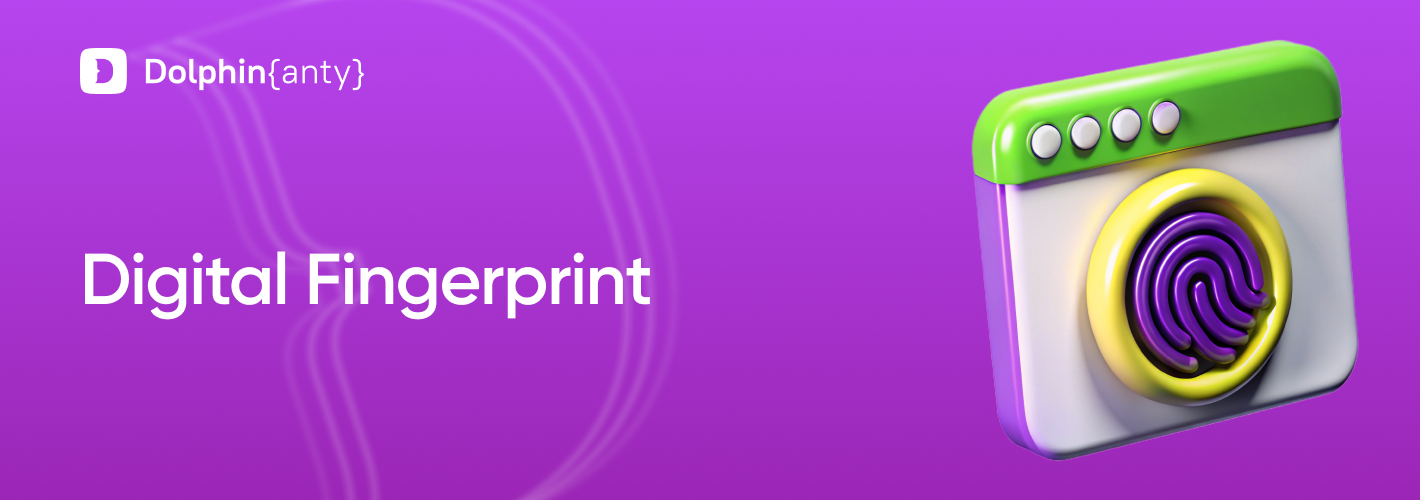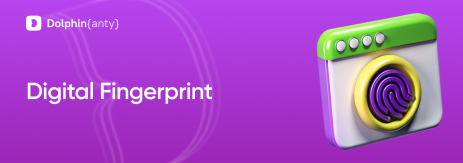What Do the Digital Fingerprint Parameters Mean in Dolphin Anty
Blog » What Do the Digital Fingerprint Parameters Mean in Dolphin Anty
The main purpose of antidetect browser is to 🏰 protect the user from being identified through digital fingerprints that are sets of browser and device characteristics. This protection is necessary in order to:
- Bypass restrictions. These can include restrictions on access from certain regions, specific devices, etc. Online platforms detect users who were previously banned and prevent them from creating new accounts;
- Create and manage multiple accounts. Many platforms prohibit creating more than a certain number of accounts. The restriction works like this: you try to create a new account, but the antifraud system recognizes you and blocks the attempt. Antidetect helps prevent this type of recognition;
- View ads outside your region. Websites scan fingerprints to personalize ads. To see ads targeted at other countries, devices or interests, you need to change your fingerprints.
- Test websites from different OS and devices. In this case, the page is opened through browsers with different fingerprints to see how it is displayed.
Online platforms identify visitors by collecting and storing their 🦶 digital fingerprints. An antidetect browser replaces these fingerprints with fake ones. As a result, websites receive incorrect user parameters and cannot recognize the user when they visit the site through another browser profile.
What are Browser Profiles
💻 A browser profile (BP or just browser) is a separate, isolated environment that simulates a visitor’s digital identity. It stores a generated fingerprint, cookies, proxy, bookmarks, start pages, plugins, browser settings and other data. Websites see each of your profiles as different users because each one has a different set of parameters. And you can configure this set of characteristics yourself. Let’s break down each fingerprint parameter to understand how to set it up when creating a new profile in an antidetect browser.

Creating a new profile in Dolphin Anty.
🎯 The goal of the setup is not just to spoof your digital fingerprint, but also to present a fingerprint to websites that 🙌 is trustworthy. This is crucial for avoiding freezes, bans and restrictions.
What Parameters and Characteristics does Dolphin Anty Spoof?
In total 🚀 Dolphin Anty spoofs over 20 parameters. Here they are ⤵️
📌 Operating system. By default, the antidetect suggests using the OS that’s already on your device. It’s best not to change this setting, as each operating system has its own set of fonts, corresponding drivers and hardware characteristics. If a website tracker detects mismatches between the OS and other device characteristics, the platform may restrict or even freeze the account.

📌 User-agent (UA). This is the identifier of the client app. Thanks to it, the website sees your browser and its version, your OS version as well as data about it. In fact, the user-agent is generated based on this information.

These days, most browsers use 👯 identical or very similar user-agents. And each OS has only one UA — not several. That’s why it’s best not to write or make up anything custom for this parameter. Avoid using user-agents provided by account sellers. The best option is to use what 🔥 Dolphin Anty offers when creating a profile. It’s generated based on real user-agents sourced directly from Google Chrome. These UAs are always up to date and don’t raise suspicions of fingerprint spoofing.
📌 IP address. Probably the oldest indicator websites have used to identify users. Through your IP, a site determines your location and internet provider.
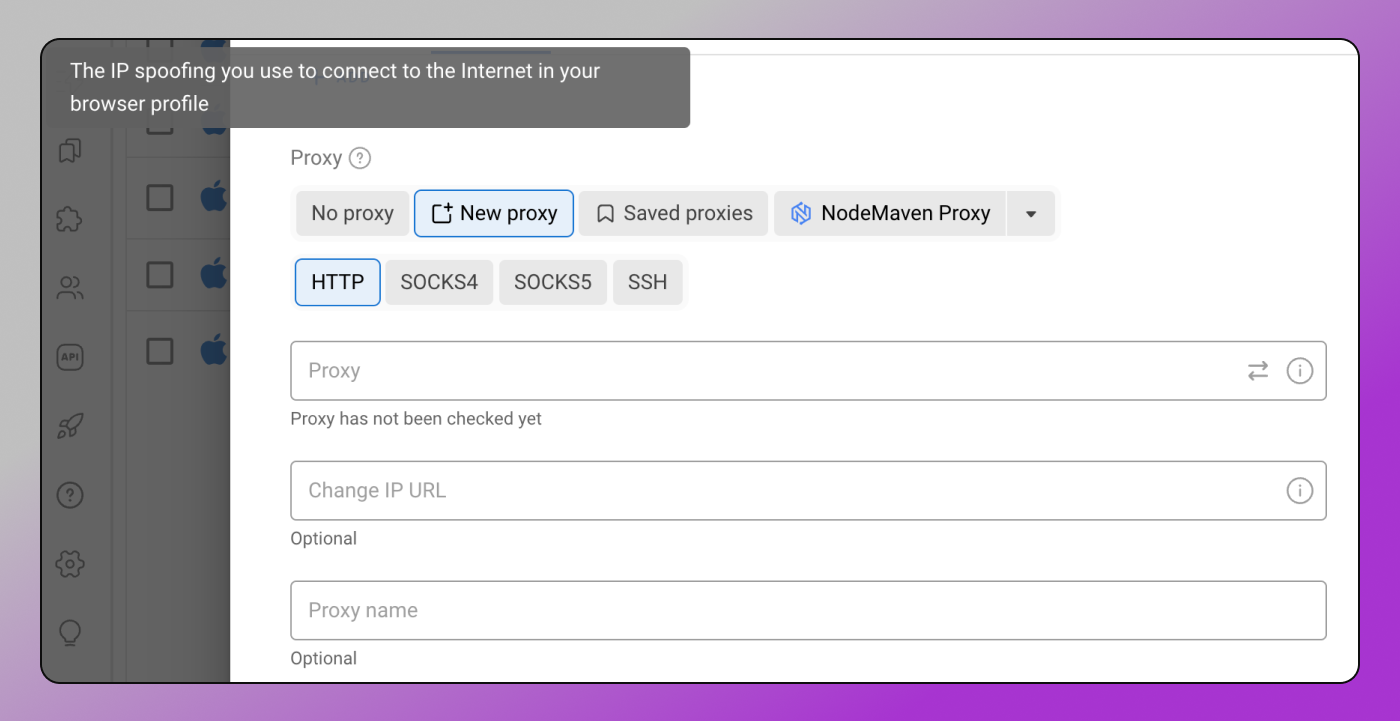
Adding a proxy during profile creation in Dolphin Anty.
All high-quality proxies are compatible with antidetects, including Dolphin Anty. If a site reveals your real location, especially your IP address, the issue is most likely with the proxy. Less commonly, the cause of the leak may be WebRTC.
📌 WebRTC. This is a technology that supports audio and video streaming from a site. It gives the page access to your media devices: camera, headphones, speakers and so on.
Important! WebRTC plugins can leak your real IP address. That’s why, when configuring this parameter in Dolphin Anty, it’s best to select the “spoof” option. This way, the IP address of the proxy server will be shown and not that of your actual device.

Here what you can set:
- Off. Disables tracking of this parameter. Not recommended, as it raises suspicion from tracking systems;
- Real. Shows your device’s real IP through WebRTC;
- Alterd. The browser automatically spoofs this parameter;
- Manual. Allows you to enter a specific IP address yourself.
📌 Canvas. This is an HTML5 element that allows the browser to render graphics, animations and other visuals using JavaScript. It’s used to generate fingerprints based on subtle rendering differences, which depend on the operating system and graphics card. This parameter is not unique — many users share the same one. That’s why it’s better to leave it as “real” when creating a profile.

- Off: completely disables the technology. This can lead to graphic issues and distrust from tracking systems;
- Noise: replaces the real parameter with one that looks natural. This may raise suspicion from platforms. It makes sense to use it across a large number of profiles working on the same platform. When an antifraud system sees many users with the same parameter, it starts considering it normal and is less likely to flag it as suspicious.
📌 WebGL. This is a technology that renders 3D graphics and animations directly in the browser without requiring additional plugins. It uses your device’s graphics card for rendering, which allows websites to display complex visual elements. Tracking systems can gather information about your graphics card and drivers through WebGL.

WebGL is not a unique parameter and is similar for many users, since the series and specifications of graphics cards are not unique. Therefore, it makes sense to set it to “real” and you won’t be recognized by it. In case if Noise Dolphin Anty generates alternative WebGL values that are close to real but different from yours. Off disables the technology. Not recommended as it can cause graphic issues and sites may suspect fingerprint spoofing.
📌 WebGL info. These are the characteristics of your device’s graphics hardware — manufacturer, graphics card model and supported drivers.

- Real. Shows the real data of your device. The combination of graphics card characteristics may be shared by different users, but overall the parameter is unique. Therefore, it’s not recommended to reveal it;
- Manual. Allows you to select from a list the characteristics that will be shown to the site. The list is curated to avoid conflicts with other fingerprint parameters.
📌 WebGPU. This is a modern web API that provides direct access from the browser to the graphics and computational capabilities of the GPU (graphics processing unit). It enables creating complex visual effects and accelerates graphics and parallel computations. This technology is used for games and applications with high-level visualization.

- Off disables the technology, which can cause graphic issues on some websites. For antifraud systems this looks suspicious since most users have this technology enabled. It makes sense to use only if you’re sure WebGPU isn’t required for the sites you work with;
- On shows sites characteristics that match the selected WebGL Info — either real or manually assigned from the list.
📌 Client rects. This refers to the position of DOM elements (the content of HTML tags in the Document Object Model) relative to the page dimensions. They are influenced by screen resolution, font configurations and other display settings.

Since many users have similar values for this parameter, it’s better to choose “Real” and show websites the Client Rects as they are. If you select “Noise” the parameter value will be distorted and might appear suspiciously unique.
📌 Time zone. Trackers see your system time and use it to determine your device’s time zone.
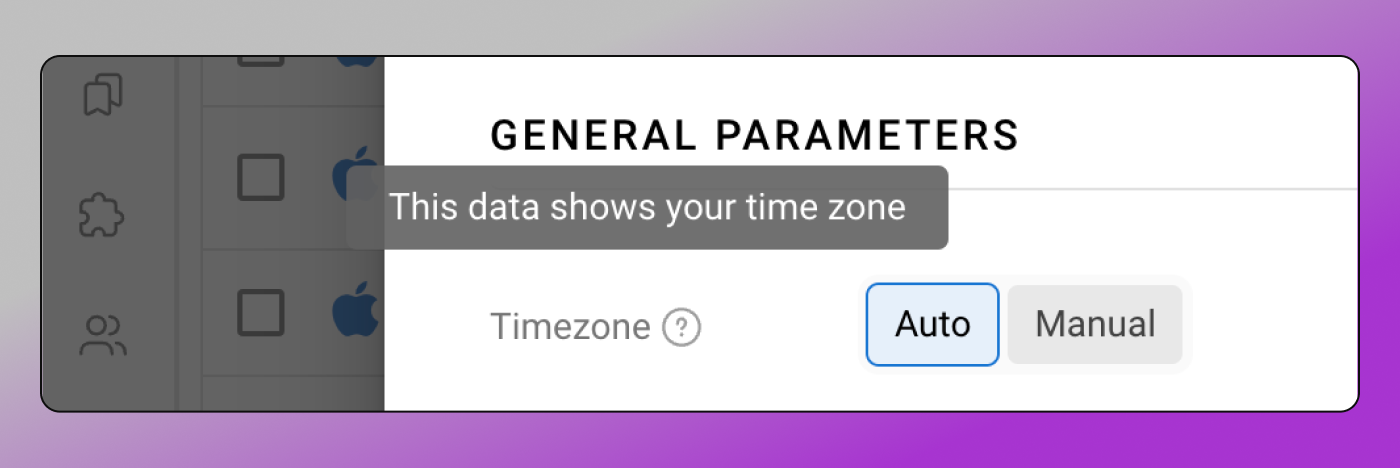
We recommend choosing “Auto”. In this case, the antidetect will select the time zone based on your proxy’s country. You can also choose it manually if needed.
📌 Language. These are your browser’s language settings.

The “Auto” option adjusts them to match your proxy. However, you can also select them manually if needed, since users in a certain country don’t always use the browser in the local language. For example, many users in the USA use Spanish and in Kazakhstan or Uzbekistan — Russian. Antifraud systems don’t find this suspicious.
📌 Geolocation. This is the location on the world map that the browser shares with the site.

The “Auto” setting selects latitude and longitude based on your proxy. You can also manually choose coordinates if you want, as long as they don’t conflict with the IP.
📌 CPU and memory. Here you choose what information about them to show to websites. You can select the real values or use ones manually provided.

Dolphin Anty offers parameters that plausibly match other fingerprint characteristics. Choosing memory and CPU settings hardly affects the device’s performance speed.
📌 MAC address. Media Access Control address is a unique identifier assigned to a network device for identification within a local area network (LAN). It’s usually written as pairs of hexadecimal digits and is embedded in the device’s network card during manufacturing.
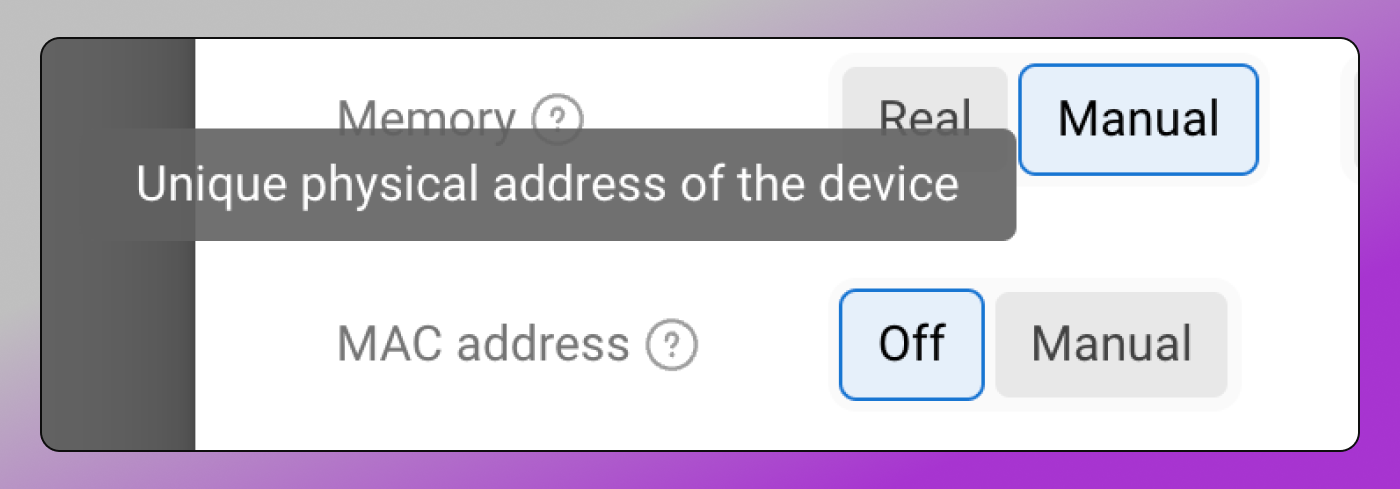
- Off disables spoofing
- Manual allows you to specify the desired address or click the “Refresh” icon in the input field to generate a random address.
By default, this parameter is turned off.
📌 Device name. This is the name assigned to the device when the operating system is installed.
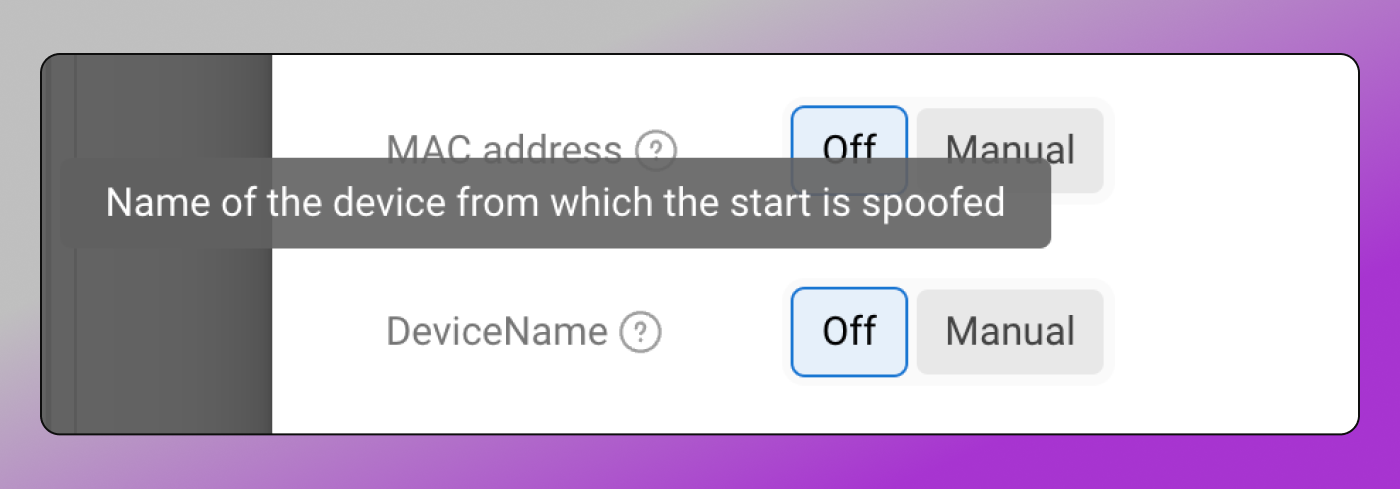
- Off disables spoofing;
- Manual allows you to specify the device name you want or click the “Refresh” icon in the input field to generate a random device name.
📌 Screen. This parameter transmits data about the screen resolution. By default, it sends the real value. Since this characteristic is not unique the same resolution is common among many users.
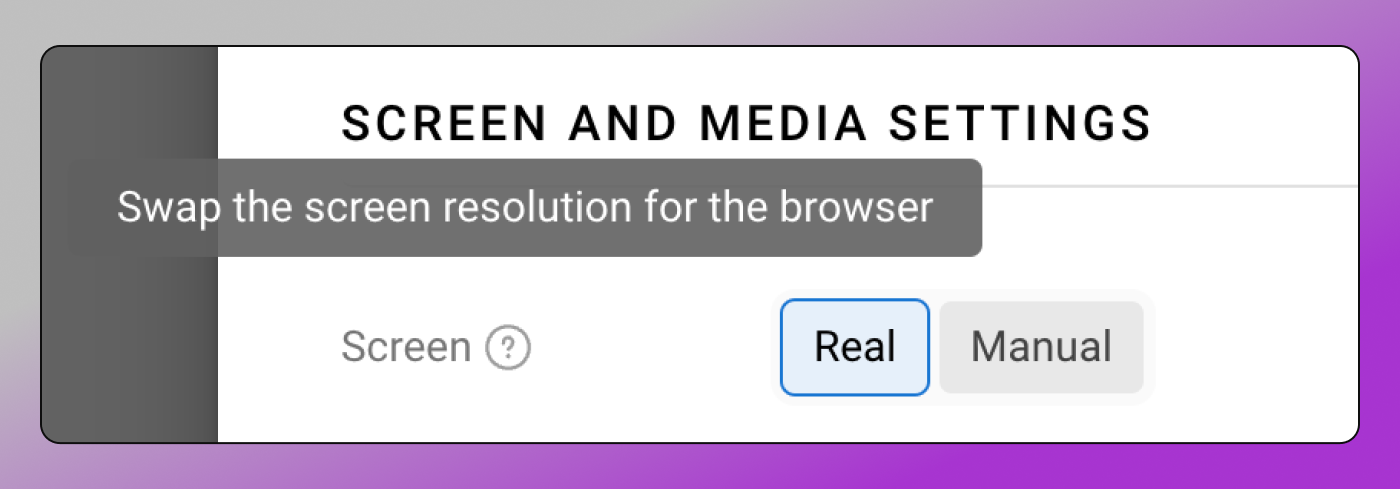
However, if your profile is used on different devices, for example, by several team members on different PCs, it makes sense to set this manually. Otherwise, constant changes in screen resolution may raise suspicion from the site.
📌 Media devices. Transmission of information about connected microphones, speakers, and cameras.
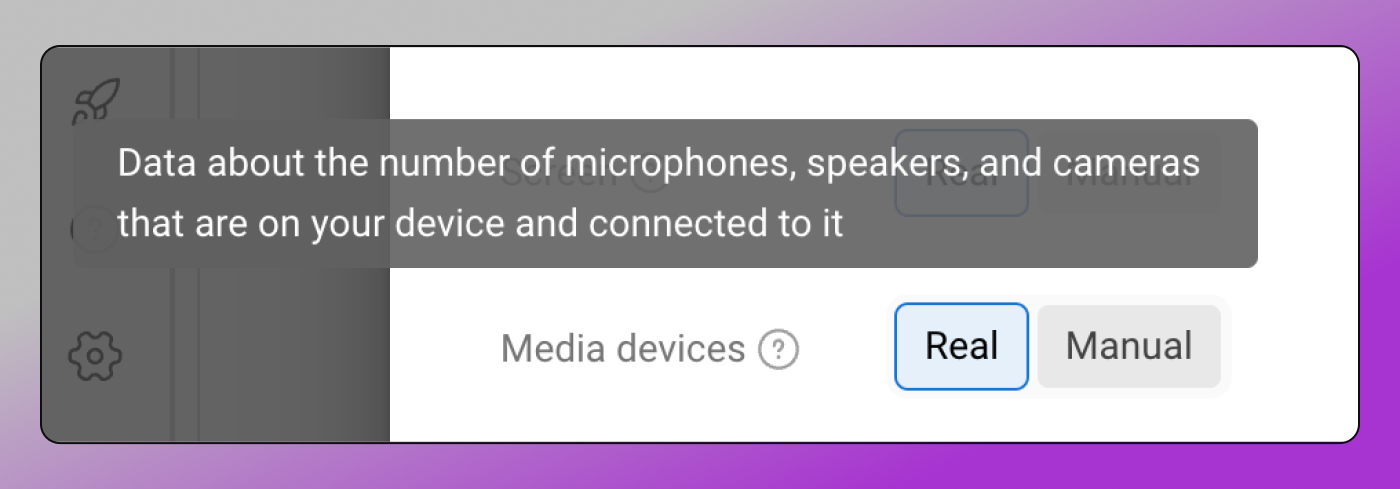
By default, the antidetect transmits the real number of multimedia devices. If needed, you can set the number manually, for example, if the profile is used simultaneously on different devices.
📌 Ports. These are access points through which websites exchange information with the device. Choosing the “Real” option allows sites to scan all ports, which is unsafe. For example, port 3389 is used to connect to the device’s desktop. Therefore, it’s better to block some of them. Moreover, many users have these ports blocked by default and site trackers consider such blocking normal. By default, Dolphin Anty already has the necessary ports set to be blocked.

You can add ports to this list if needed.
📌 Do not track. This refers to tracking behavioral patterns: typing, button clicks, cursor movements, etc.

By default, this setting is off, so websites track user behavior. However, if needed, you can disable it though this may reduce antifraud trust.
📌 Command line switches. These are settings that allow launching the browser with specific parameters or flags. This function is similar to launching Chrome via chrome://flags. Here is a list of launch arguments with descriptions of their effects.

By default, launch arguments are turned off since they are not used often.
📌 Hide profile name in browser. This feature hides the name of the browser profile while it’s in use.

Here’s how a profile looks when the profile name is not hidden.

And here’s how it looks when the browser profile name is hidden.

Conclusion
When choosing fingerprint components, it’s important ☝️ not to make it too unique. Avoid using noise or blocking tracking of certain parameters without a good reason.
